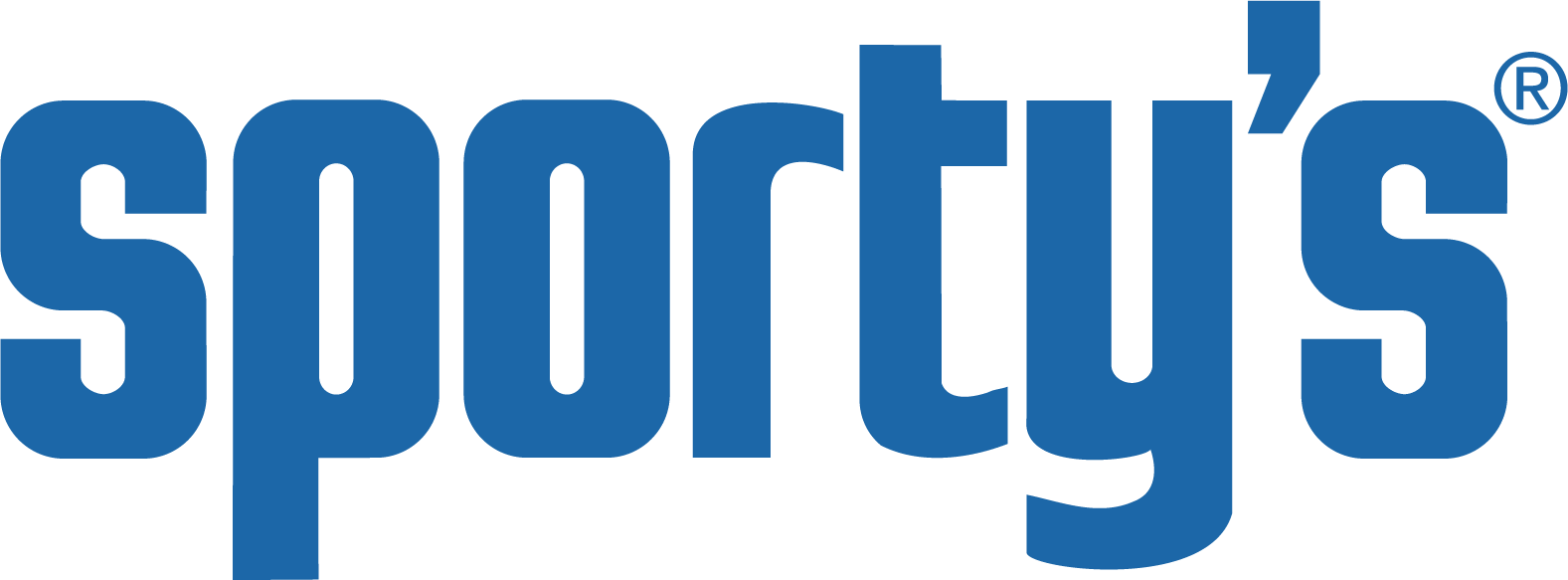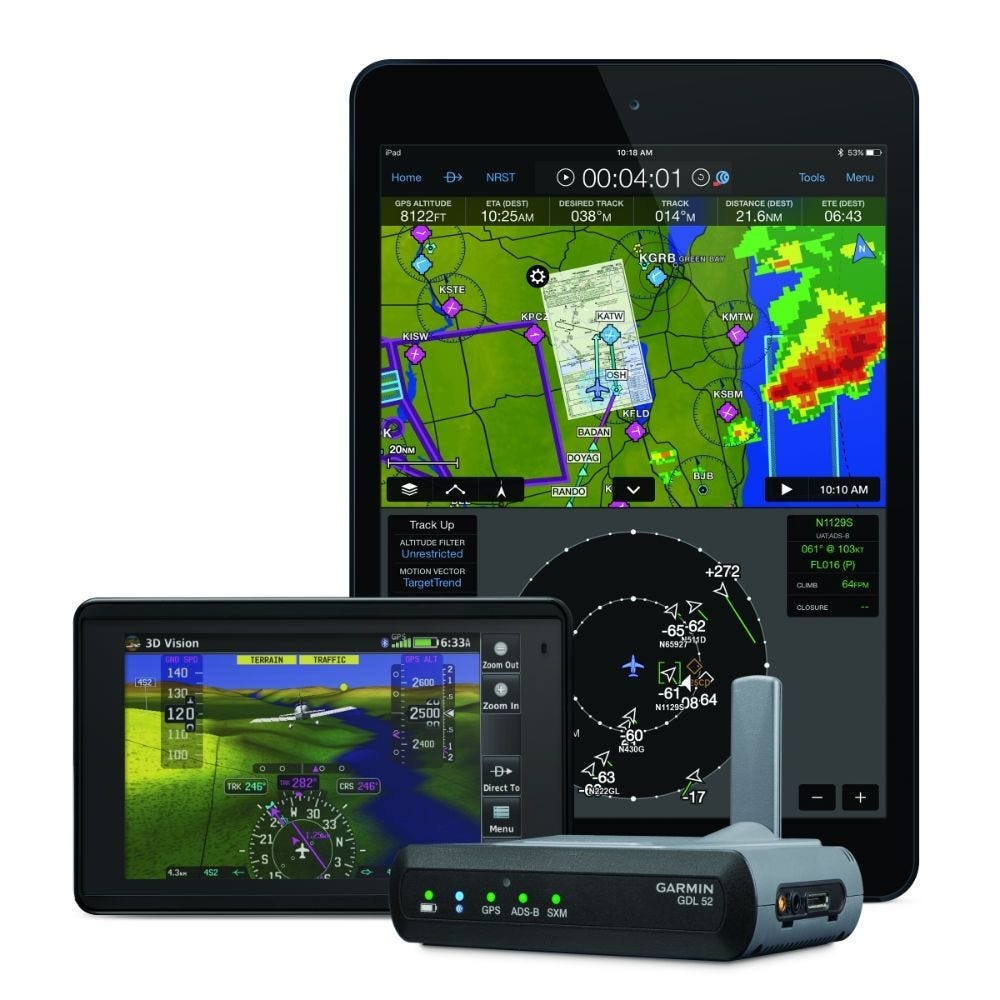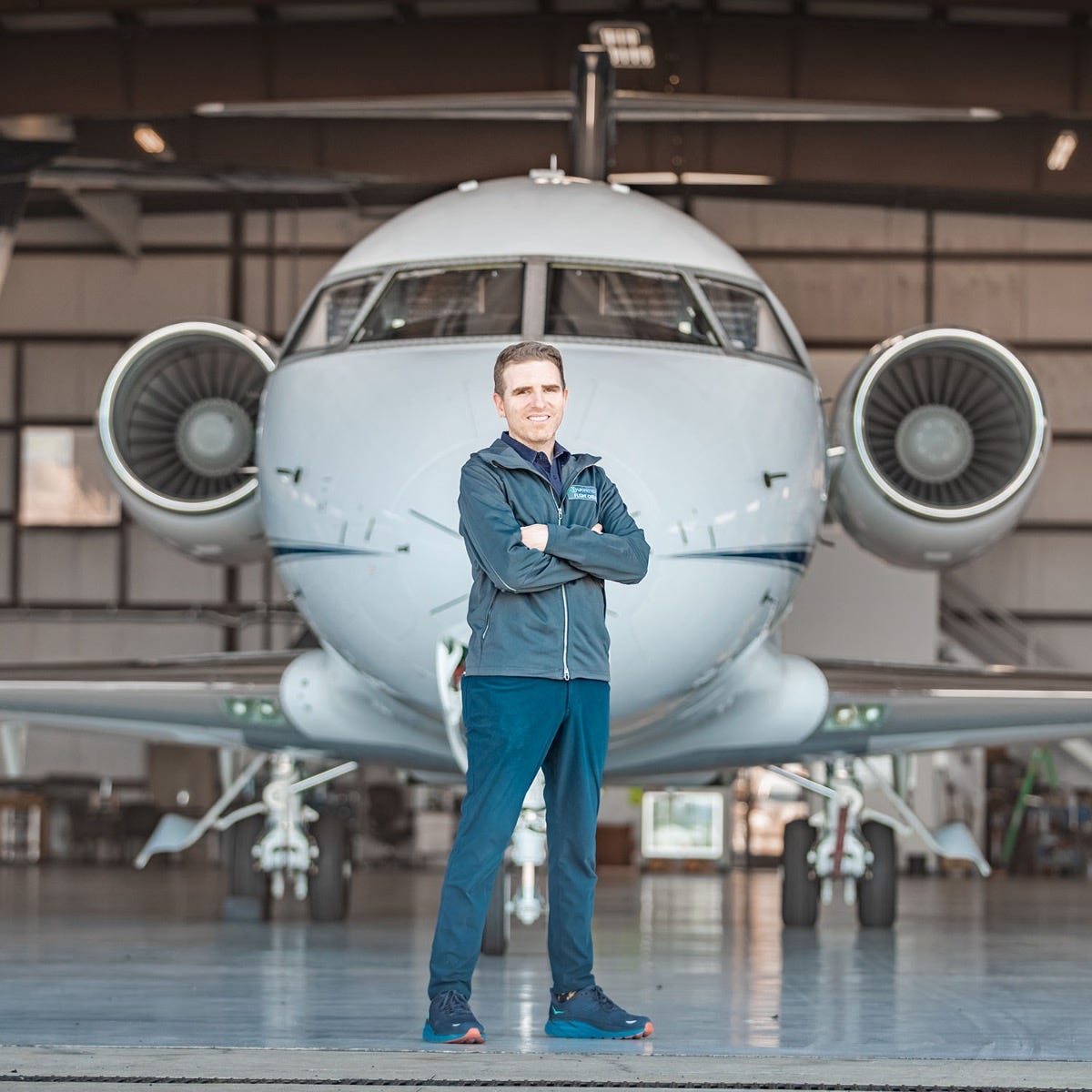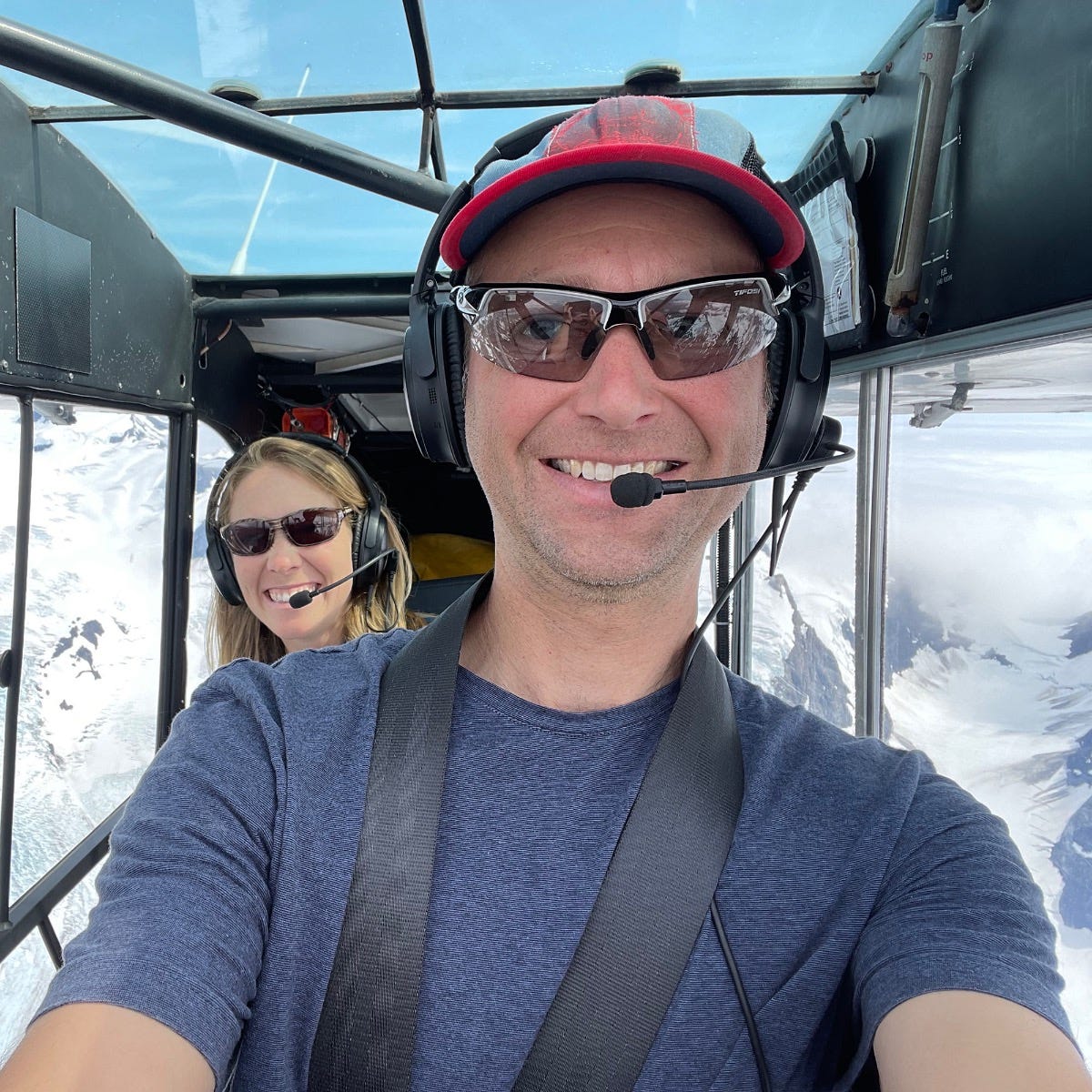Why should pilots use oxygen?
Increase Pilot Safety
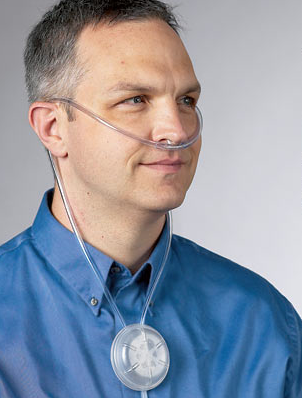 Hypoxia is a far more common problem than most pilots admit, and is not limited to pilots of turbocharged or high performance aircraft. Many pilots need oxygen below the 12,500 feet specified in the FARs, especially at night. Carrying a portable oxygen system is the only way to protect against the serious and difficult-to-detect symptoms of hypoxia.
Hypoxia is a far more common problem than most pilots admit, and is not limited to pilots of turbocharged or high performance aircraft. Many pilots need oxygen below the 12,500 feet specified in the FARs, especially at night. Carrying a portable oxygen system is the only way to protect against the serious and difficult-to-detect symptoms of hypoxia.
Increase Passenger Comfort
Do you or your passengers always arrive tired or with a headache? It’s probably because of mild hypoxia. Spending a few hours at 10,000 feet is often enough to cause significant discomfort. And on average, women need oxygen 2,000 feet lower than men. An oxygen system can help you and your passengers arrive comfortably.
Increase your aircraft’s utility
When 12,500 is no longer a barrier, you can truly make the most of your high performance airplane. You’ll be able to out-climb turbulence or weather, make use of favorable tailwinds, and even enjoy the lighter traffic between 10,000 and 20,000 feet.
Harmful effects of hypoxia
The lack of oxygen in the human body results in a condition called hypoxia. When a pilot inhales air at high altitudes, the lower partial pressure of oxygen means there isn’t enough to satisfy the needs of a human body. The result, hypoxia, impairs the functions of your organs, most noticeably your brain.
In fact, starving your brain of oxygen will have an effect similar to having a few drinks. You’ll feel pleasant or nonchalant, your hands and feet might become clumsy, but you’ll probably not notice it. Using supplemental oxygen will not cross your mind. As you continue to starve the brain of oxygen, you may become dizzy or feel a tingling of the skin. A dull headache can be felt, but you might not notice it, since your senses are becoming muted.
Eventually, your heart rate will increase and both your lips and the skin under your fingernails will begin to turn blue. The lack of oxygen will affect your vision as things will start to blur. You won’t feel sick. Much like CO poisoning, your brain will insist that everything is fine, however, your abilities will be similar to someone who has had way too much to drink.
What do the Federal Aviation Regulations say about Oxygen?
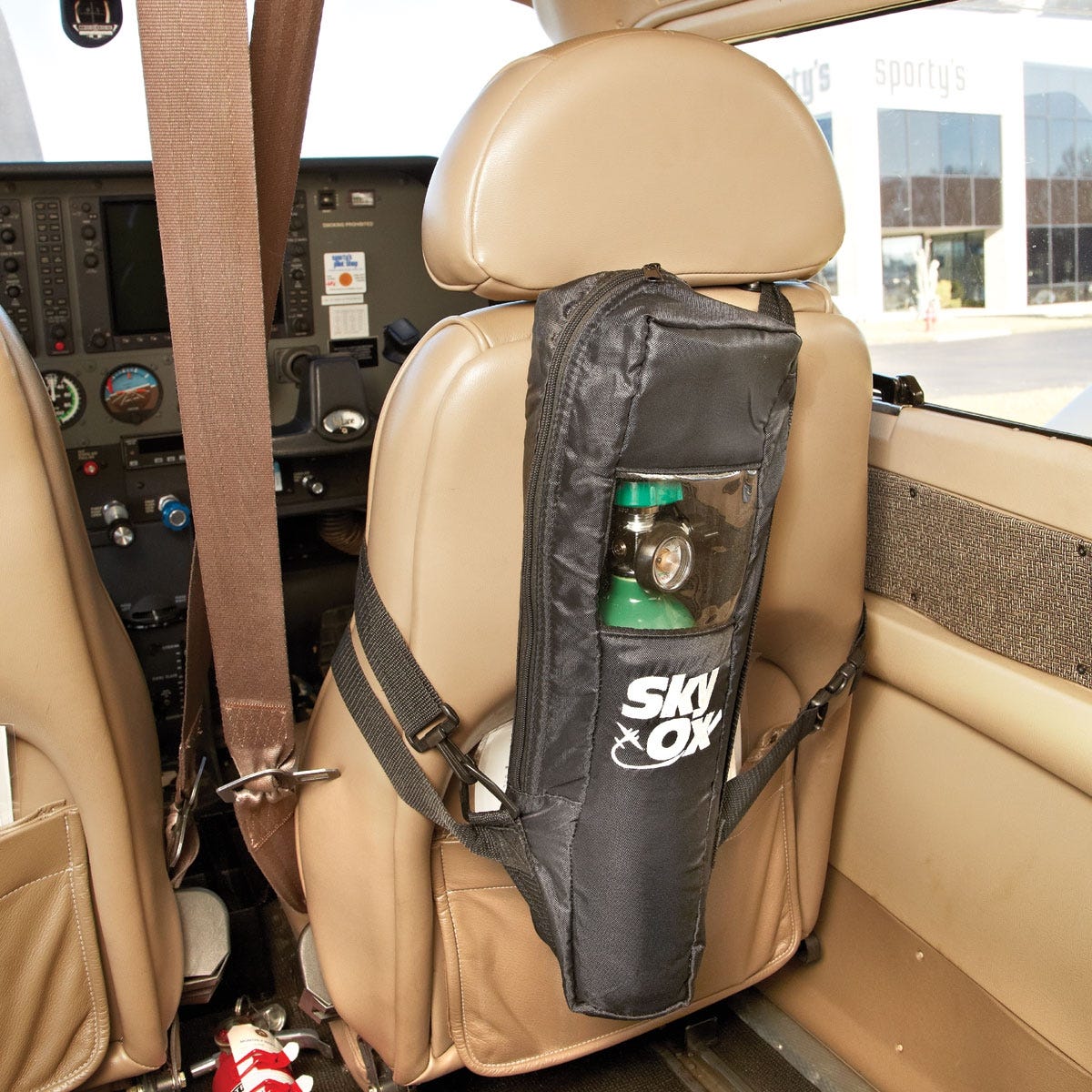 While using supplemental oxygen at altitude makes a lot of sense, any analysis of oxygen systems would not be complete if we didn’t quote scripture and verse.
While using supplemental oxygen at altitude makes a lot of sense, any analysis of oxygen systems would not be complete if we didn’t quote scripture and verse.
Federal Aviation Regulations (FARs)
91.211 Supplemental oxygen.
(a) General. No person may operate a civil aircraft of U.S. registry -
(1) At cabin pressure altitudes above 12,500 feet (MSL) up to and including 14,000 feet (MSL) unless the required minimum flight crew is provided with and uses supplemental oxygen for that part of the flight at those altitudes that is of more than 30 minutes duration;
(2) At cabin pressure altitudes above 14,000 feet (MSL) unless the required minimum flight crew is provided with and uses supplemental oxygen during the entire flight time at those altitudes; and
(3) At cabin pressure altitudes above 15,000 feet (MSL) unless each occupant of the aircraft is provided with supplemental oxygen.
(b)Pressurized cabin aircraft.
(1) No person may operate a civil aircraft of U.S. registry with a pressurized cabin -
(i) At flight altitudes above flight level 250 unless at least a 10-minute supply of supplemental oxygen, in addition to any oxygen required to satisfy paragraph (a) of this section, is available for each occupant of the aircraft for use in the event that a descent is necessitated by loss of cabin pressurization; and
(ii) At flight altitudes above flight level 350 unless one pilot at the controls of the airplane is wearing and using an oxygen mask that is secured and sealed and that either supplies oxygen at all times or automatically supplies oxygen whenever the cabin pressure altitude of the airplane exceeds 14,000 feet (MSL), except that the one pilot need not wear and use an oxygen mask while at or below flight level 410 if there are two pilots at the controls and each pilot has a quick-donning type of oxygen mask that can be placed on the face with one hand from the ready position within 5 seconds, supplying oxygen and properly secured and sealed.
(2) Notwithstanding paragraph (b)(1)(ii) of this section, if for any reason at any time it is necessary for one pilot to leave the controls of the aircraft when operating at flight altitudes above flight level 350, the remaining pilot at the controls shall put on and use an oxygen mask until the other pilot has returned to that crewmember's station.
Oxygen 101
Mask vs. Cannula
An oxygen mask covers both your nose and mouth, surrounding both areas with oxygen-rich air, and allow you to breathe normally. This is great until you have to make a radio call. Some expensive masks have a built in microphone, but most pilots will briefly lift the mask to use their headset. A cannula consists of a thin tube with two hollow spikes in it. The spikes go into your nostrils and you breathe through your nose. This allows pilots to still use a traditional headset without having to briefly remove the oxygen mask. A cannula system also uses much less oxygen than a mask system, meaning you don’t have to refill your tank as often. While cannulas are more popular for general aviation pilots, they are only approved for use up to 18,000 feet.
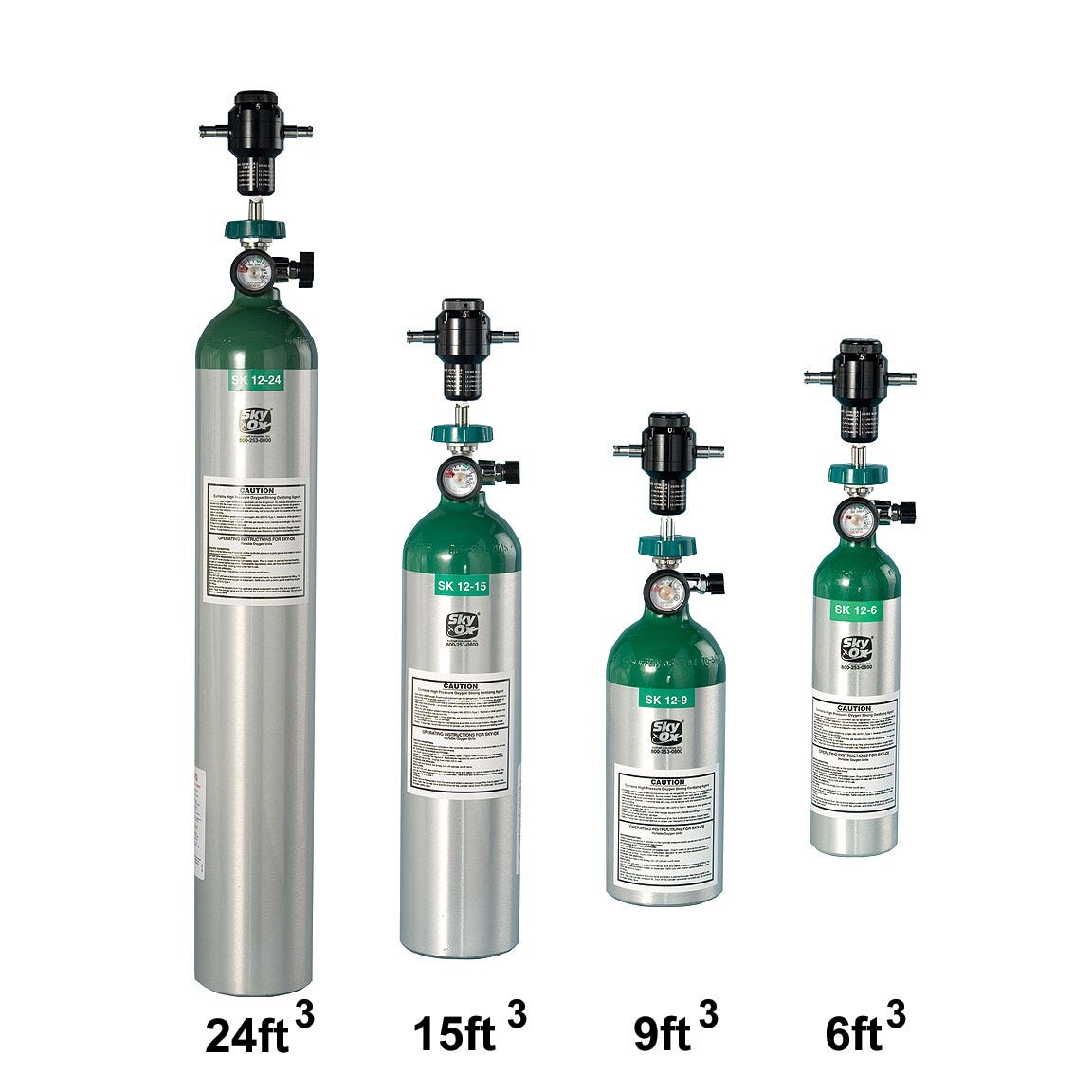 Storage Capacity
Storage Capacity
The size of your oxygen tank will normally be given in cubic feet. The larger the cylinder, the more oxygen it will store. Many systems will also quote a run time. For example, a 15 cubic foot cylinder will provide almost 14 hours of run time on one cannula, but only 4.5 hours of run time on one mask. This means that if you have two people in the cockpit using masks, you’ll have just over two hours’ worth of oxygen available.
Regulator
A regulator is the magic device that goes on top of your tank to let just the right amount of oxygen out. Most have some sort of knob so you can change the amount of air given the conditions. There will normally be different settings for different altitudes, as the amount of oxygen needed at 14,000 feet will differ from that at 28,000 feet. This is where a fingertip pulse oximeter can really help dial in what is right for you. An older, overweight pilot might need to dial up a little more oxygen than someone half their age.
On Demand or Pulse Regulator
You may also run across something called an on demand or pulse regulator. This is an electronic device that senses when you breathe. It only lets out oxygen when you inhale. This can increase the run time of your cylinder. Unfortunately, it does require batteries and inserts another thing do go wrong in your oxygen system. They are relatively expensive and most pilots don’t use them. Unless you plan on using oxygen a lot, we recommend staying away from demand regulators.
Flow Meter
A flow meter is a simple device that can be found on some systems. A flow meter can help restrict the flow of oxygen and are normally used on systems where a regulator isn’t doing the job already. There is normally a little screw with a ball that can be suspended displaying the flow of oxygen.
Steel vs. Aluminum Cylinder
There are two types of cylinders: steel and aluminum. Historically, steel came around first, so pressure vessels (like oxygen tanks) were made of steel. Steel is abundant, strong, and relatively easy to work with. The problem is the weight. Steel is heavy and weight is a big deal for us pilots. Aluminum tanks started to become more popular for medical use, as they are much lighter and easier to handle. Most aluminum tanks were pretty small to handle the higher pressure associated with storing oxygen. Advances in design and alloys have made it possible to make larger aluminum tanks. Unless you need a MASSIVE amount of oxygen, an aluminum tank is preferred. The lighter weight makes them easier to work with and better for the useful load of your aircraft.
Hydrostatic Testing
This is a process in which your tank is pressurized to high levels to see how much it will expand under pressure. All oxygen tanks must undergo this testing. If you buy a brand new system, your tank should have already been tested. The manual says that you should undergo hydrostatic testing once every 5 years. Finding a testing facility isn’t hard, but it will require you getting your cylinder there and back, as well as paying for the testing.
Aviation Grade Oxygen
You might have heard the terms Medical Grade Oxygen vs. Aviation Grade Oxygen. This sounds odd; after all, it is the same O2 that we breathe every day, right? The biggest difference is that medical grade oxygen usually requires a prescription to get. Aviation oxygen is also pretty specific on not having any moisture content - the thought being that you wouldn’t want oxygen lines freezing at higher altitudes because of moisture. There is also oxygen used for welding. We’ve heard of pilots who know a welder and go fill their tank off welding oxygen. While that’s not what aviation oxygen system manufacturers recommend, it’s not necessarily illegal either. When in doubt, aviation oxygen is the safest bet.
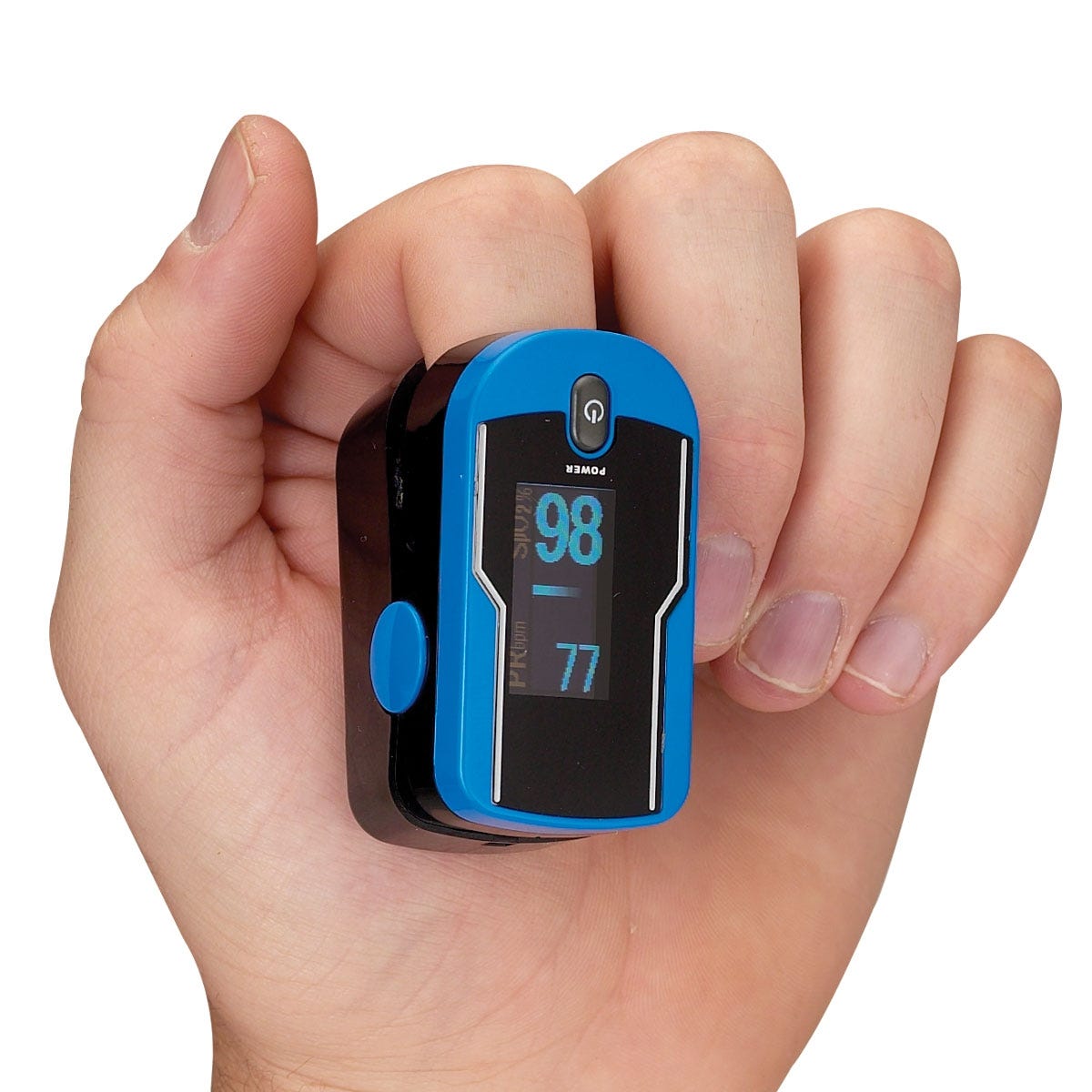 Pulse Oximeter
Pulse Oximeter
A pulse oximeter is a must-have accessory for all pilots, especially those using or even considering oxygen. This handy little gadget goes on your fingertip and tells you how much oxygen is in your blood. It can help you decide what the right altitude is to start using supplemental oxygen. This will vary between pilots, as a younger, healthier person will normally have more oxygen in their blood than someone who is older, overweight, and smokes.
Oxygen Generator/Concentrator
An oxygen generator might also be known as a concentrator. The idea is that it can take the air in your cockpit and concentrate it. There’s a theoretically limitless supply of oxygen, because there is no tank to keep filling up. It’s a smart concept, but they do require power to operate (most have a battery and power cable available). The power requirement, coupled with the high price (over $1500), means these systems are pretty rare in aviation. Most pilots will stick with traditional cylinders.
Why the SkyOx system is perfect for pilots
Value
SkyOx offers complete, advanced systems, with all the features you need for safe, comfortable high altitude flight. And best of all, these systems are available from Sporty’s at excellent prices.
Oxymizer® Cannula
The breakthrough Oxymizer conserving cannula is the comfortable and efficient way to use oxygen up to 18,000 feet. It nearly triples the duration from each bottle, storing oxygen in the pendant reservoir, so you only get oxygen when you need it. This is not the “mustache type” cannula found on other systems. Eating, drinking and talking with passengers is easy.
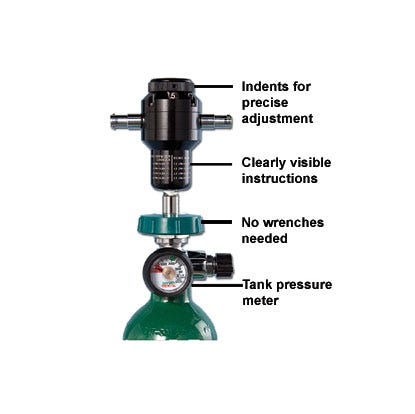 Easy to Use
Easy to Use
While SkyOx systems feature advanced features and quality construction, there are no confusing electronic controls, no batteries to replace, and no multi-port valves. Just plug in, set your altitude and sit back. The Click-a-breath regulator does the work for you.
Large Variety of Sizes and Construction
No matter what your needs are for an oxygen system (be it backup or everyday use), we have a size and configuration to match.
Made in the USA for over 30 years
All of our oxygen systems are proudly made in the USA, guaranteeing exceptional quality and lasting value.
Padded Carrying Bag Included Free
Each SkyOx system includes a custom carrying bag. A $50 value—free! Each system also includes an aluminum oxygen cylinder, regulator (four-place), four cannulas and one mask, flow indicators, hoses (10 feet long), fittings and padded carrying case with viewing window to monitor gauges with case closed.
